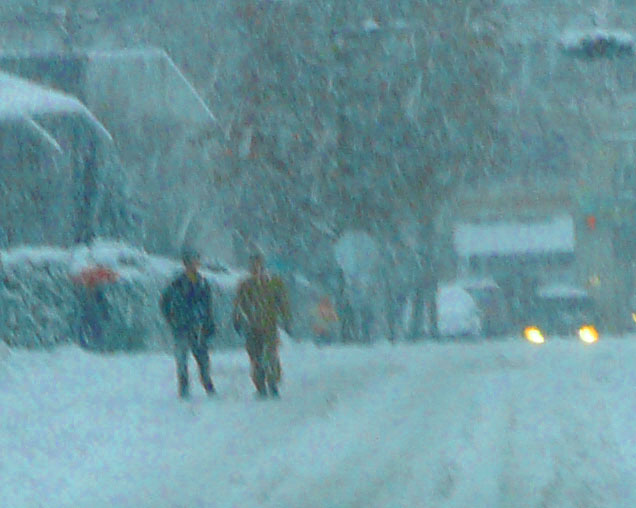People Are Non-Linear

When it snows in Seattle, people rediscover their legs. Out of necessity or just for fun, the walkers emerge. However wearily they may trudge, most appear to be enchanted.
And lo, the right-of-way no longer belongs to the cars. People saunter carelessly right down the middle of the street. Kids on sleds zip down hills past parked cars blanketed in snow.
>>>
Last spring when gasoline prices rose to $4/gallon, no one was surprised to see a jump in transit use. Less expected, however, are recent data showing further increases in ridership, even as gasoline dropped back to the $2/gallon range.
Some of the sustained demand for transit is probably related to people seeking new ways to save money as the economy has worsened. But another factor is almost certainly at play: habit. People needed a compelling reason to break their car commute habit, and once they tried transit, they were likely pleased in ways they hadn’t expected.
When snow breaks people’s routines and gets them walking, might we expect a similar persistent effect? It seems plausible that some would learn that it really doesn’t take that long, or that it’s nice to pass slowly through their neighborhood, or that they’re less stressed when they arrive, or that the exercise feels good, or that it’s satisfying to know that their travel mode has zero environmental impact.
And it can’t hurt when people get a taste of how nice it is to not live under the tyranny of cars.
UPDATE 12-23-08: The Seattle Times reports on how the snow is helping neighborhood businesses.  Though mobility is generally viewed as a positive contribution to quality of life, ironically, we’ve gotten to the point where in some cases reducing mobility can be good medicine for strengthening local communities.  That idea as it pertains to peak oil was previously discussed in this post.
